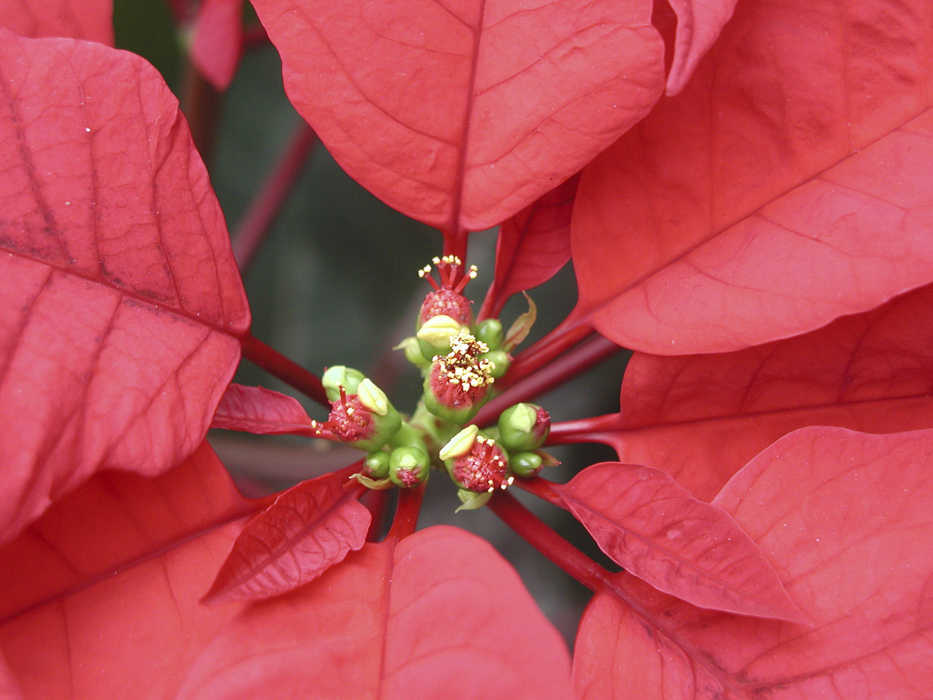Early winter is when poinsettias come into the limelight, showing off their colors in homes and shop windows. But a poinsettia is more than just seasonally flamboyant.
To check out more of this plant’s botanical flair, set your holiday poinsettia on a table in good light so that you can look closely at its flowers. The flowers are not those large, red, leaf-like structures; those are just that — modified leaves called bracts. The bracts are for attracting pollinating insects.
The flowers are in the cyathiums, the little, greenish, cup-shaped structures above the bracts. Each cyathium contains a single female flower surrounded by a harem of males.
Pluck a cyathium from the plant and slice it in half from top to bottom. A magnifying glass helps here. You’ll see the cyathium’s inner wall is lined with numerous tiny flowers which, when the flower is mature, protrude up through the cup’s opening. These are all male flowers. You might also see a stalk attached to the very bottom of the cyathium, protruding up through the cup opening and capped by what looks like a turban. That is the female flower.
On the outside of the cyathium is a single yellow gland that looks like the mouth of a fish poised to ingest food. Next time a friend comments on the beauty of your poinsettia flower, take out a magnifying glass and examine a few cyathiums before looking up and nonchalantly agreeing.
Have you ever wondered how stores always manage to have blooming poinsettias for the holiday season?
The poinsettia can be fooled into blooming at any time of year merely by exposing it to artificially shortened days.
Along with chrysanthemums and most strawberries, poinsettia is a “short-day” plant. That is, short days induce it to form flower buds. (“Short-day” plants actually are responding to long nights, but the phenomenon was originally thought to depend on day length, and the term stuck.)
To bloom for Christmas, commercial poinsettias are given artificially long nights by being covered with shade cloth. You can use this trick to make your poinsettia bloom again whenever you want. But first, your plant needs a rest. In the next few weeks, dropping leaves and fading flowers will tell you that it wants to be left alone, kept slightly cool, and watered just enough to keep its stems from shriveling.
The plant should start to perk up in about April. Shorten the stems and give it good light — preferably outdoors, once the weather warms — and fertilizer and water as needed. In late summer, move the plant back indoors, to a sunny window.
Begin the light treatment three months before you would like the plant to bloom. Make sure it gets 14 hours of uninterrupted darkness daily by moving it into a dark closet or covering it with an opaque bag. “Uninterrupted darkness” means just that; even a flash of light during the plant’s night will be read as two shorter nights.
After eight weeks, flower buds will be evident, and you should have a blooming poinsettia within a month. If you want bloom for Christmas next year, start the light treatment in the middle of September.
Poinsettia, like other members of the spurge family, oozes a white sap when its leaves or stems are cut. That sap is bitter and irritating, and can cause stomach upset but, contrary to popular myth, it is unlikely to be fatally toxic to a dog or cat.

